Even if you probably have a long list of household chores, lubricating your garage door is one maintenance task you should never forget. A door is less noisy and operates more effectively with proper lubrication, decreasing friction between moving parts.
Are you wondering how frequently you should lubricate the garage door? We have your back! We've done extensive research to give you the best answer!
Regular preventive maintenance, such as lubricating a garage door, is necessary. Establish the practice of lubricating every three months. This will maintain the top condition of your garage door.
This article will show you where to oil a garage door, what the best lubricants are, and how to grease a garage door correctly. With that said, let's dive right into this topic below!
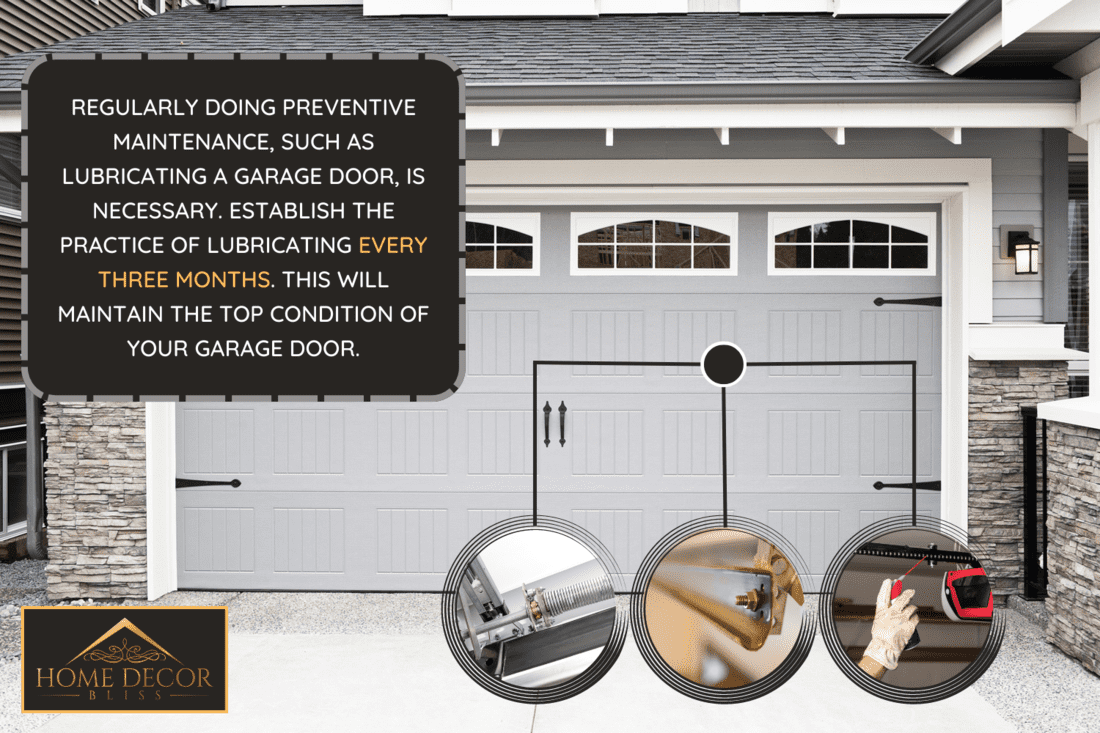
How Often To Lubricate The Garage Door?
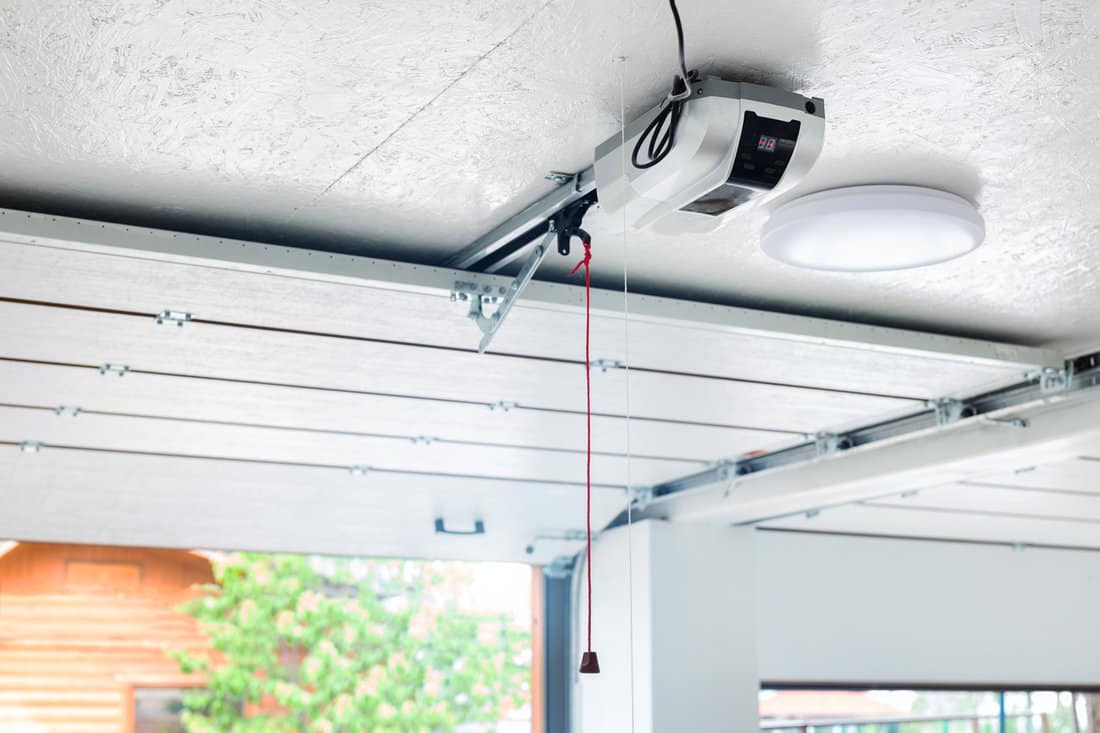
We may include affiliate links and curated AI content to highlight top design styles.
Although garage door models can vary, most of them need a simple lubricating touch-up every three months or so.
Another indication that your garage doors need maintenance is if you hear a grinding noise or if it is not operating smoothly. Several interrelated pieces go into making a garage door.
The parts may rub against one another and generate friction while they work.
The contracting and expanding brought on by the cold weather can also indicate that your door requires lubrication and maintenance.
To avoid grating and shearing, which can harm your garage door, proper lubrication is required for various garage door parts.
Where Do You Lubricate A Garage Door?
Your garage door has several parts that require lubrication to function correctly. The most lubrication is recommended for the following:
1. Tracks
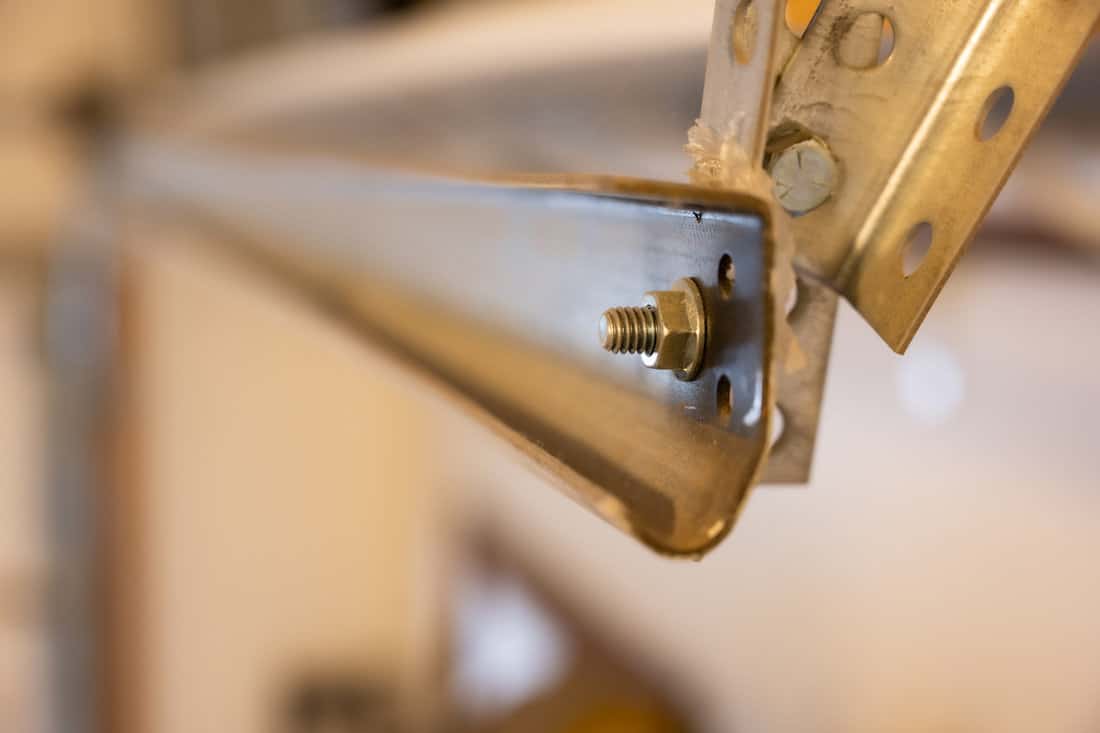
Yearly lubrication of the track is recommended. Nevertheless, cleaning the track once every few months is a good idea to prevent any dirt buildup from resulting in a problem.
2. Springs

Every single day, the door is lifted by the torsion springs. Their lubrication deteriorates over time, resulting in irritating squeaks and squeals.
Spray enough lubricant on the springs so they may move more readily but not so much that the spray runs down to the ground.
3. Hinges
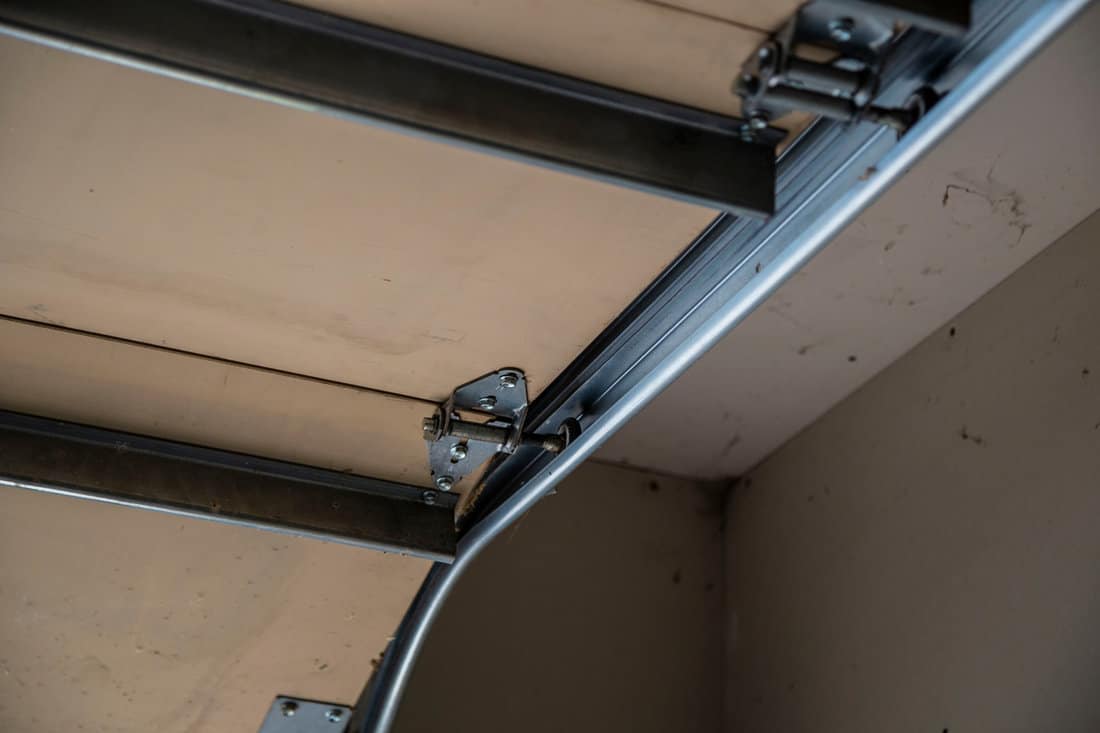
Keep in mind the hinges on the panels. The pivot points of steel hinges need to be greased. On the other side, plastic hinges ought to be left alone.
Lubricating plastic might harm it, requiring the replacement of the hinges.
4. Rollers
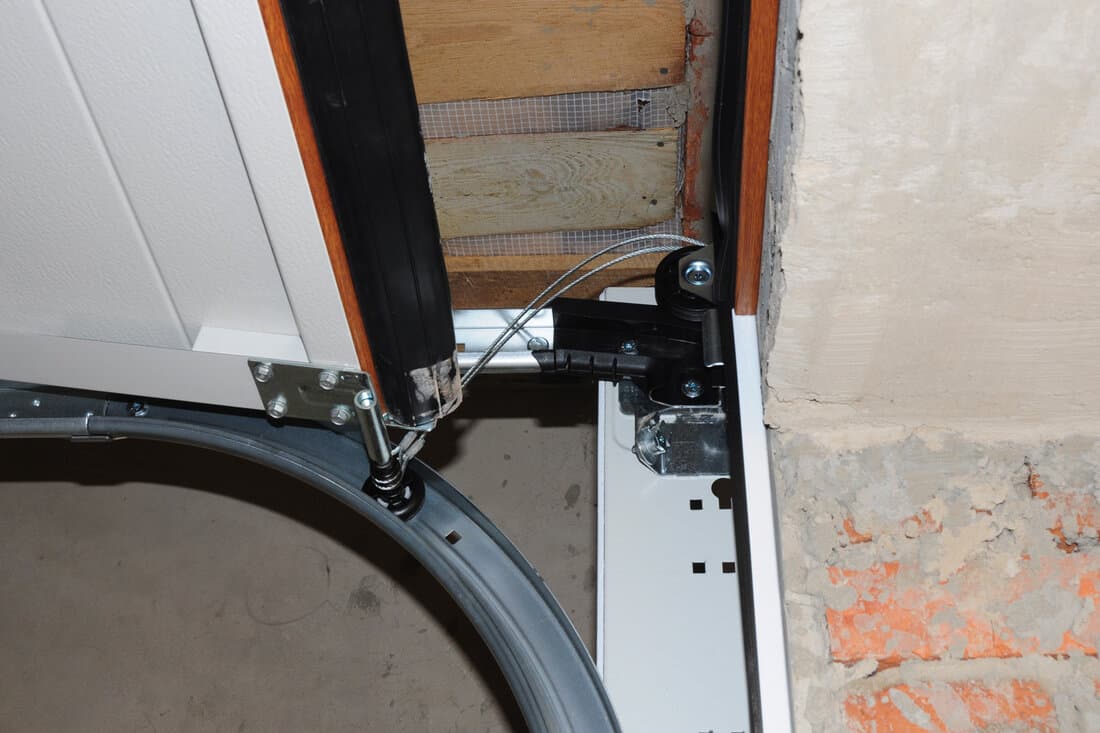
Lubricate the rollers thoroughly to ensure the door opens and closes without a hitch. If the wheels on your rollers are nylon, lube the bearings, not the nylon itself.
All-metal rollers don't require as much caution but don't use too much lubrication. Ultimately, you don't want that to drip onto your car.
5. Locks
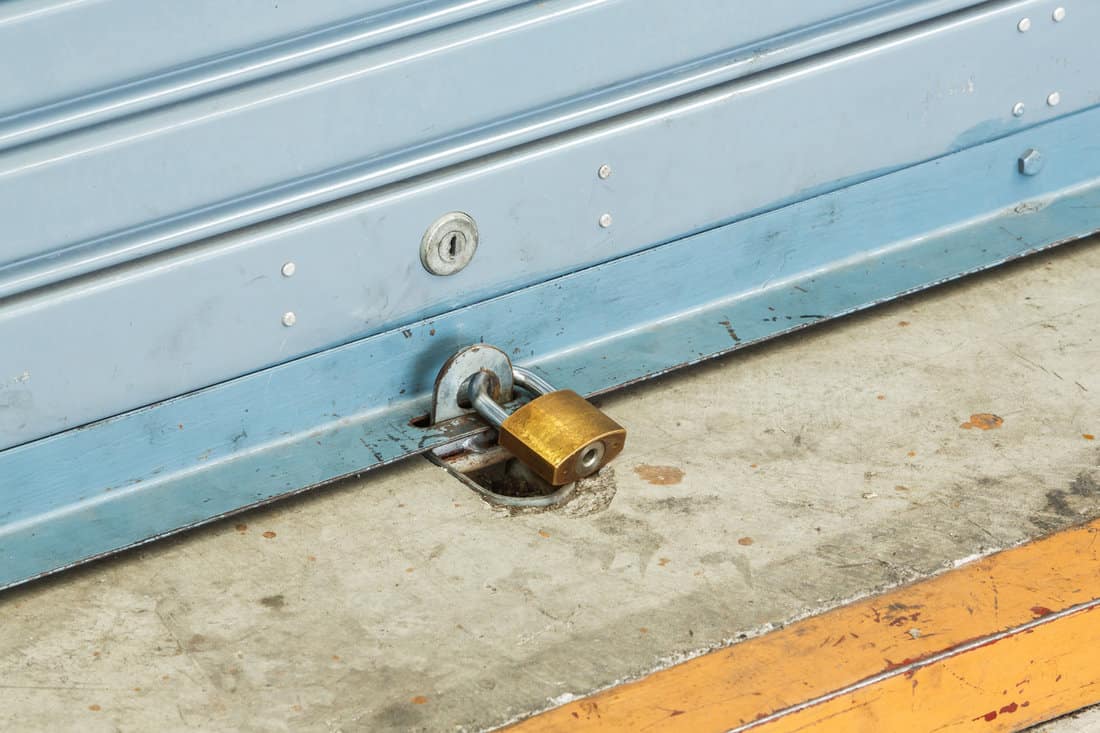
Although applying lubricant to the lock or the key won't do any harm if they are challenging to open or close or if they stick, they are not a necessary component of garage door lubrication and probably don't need to be done very often.
What Are The Best Garage Door Lubricants?
You must first choose the right product if you're wondering how to lubricate a garage door.
When choosing a garage door lubricant, look for silicone sprays or white lithium grease. Regarding lubricant injection into tiny moving parts, aerosol sprays are your best choice.
Choose a high-quality product because there are many different garage door lubricants available.
Here are some recommended lubricants available right now:
WD-40 Specialist White Lithium Grease
Ideal for applications involving metals that need heavy-duty lubrication and protection against rust and corrosion. Unbeatable protection from 0° to 300° F.
See this WD-40 lithium grease on Amazon.
Sprays on effortlessly and offers a thick, protective layer for door tracks, pulleys, cables, gears, and hinges. It is 50-state volatile organic compounds (VOC) compliant and ideal for greasing machinery before putting it away.
DuPont Non-Stick Dry-Film Lubricant
It is a special dry-film lubricant consisting entirely of surface binders and Teflon. While lubricating, a dry lubricant will keep abrasive impurities at bay.
See this non-stick dry-film lubricant on Amazon.
Teflon was included in the formulation to boost water resistance, improve high and low-temperature ranges, and prolong the life of the lubricant. Use on surfaces where a dry, non-oily, stain-free, silicone-free layer is required. Effective between -100°F to 480°F.
3-In-One Professional Garage Door Lubricant
This maintains the functionality of your home or commercial garage door system. It is a no-mess, quick-drying lubricant for garage door systems.
See this 3-in-one professional lubricant on Amazon.
Regular use prevents rust, corrosion, sticking, and squeaking on hinges, door tracks, pulleys, and latches. The lubricant prevents dust buildup and dries rapidly without leaving a sticky behind.
Blaster Premium Silicone Garage Door Lubricant
It is a lubricant made of silicone that leaves a layer free of tack and won't collect dirt and dust. Teflon Fluoropolymer was included in the formulation to minimize wear and friction.
See this Blaster garage door lubricant on Amazon.
Due to its severe pressure agents, it can occasionally serve as a grease substitute. Also, it significantly reduces squeaks brought on by the garage doors and their mechanisms.
WD-40 Specialist Water-Resistant Silicone Lubricant
Use this to safeguard things against the destructive effects of the elements. It is simple to use and forms a transparent protective film that repels dirt rapidly after drying.
It has been demonstrated to protect surfaces from -100 °F to 500 °F.
See WD-40 specialist water-resistant silicone lubricant on Amazon.
How Do You Apply Lubricant To A Garage Door?
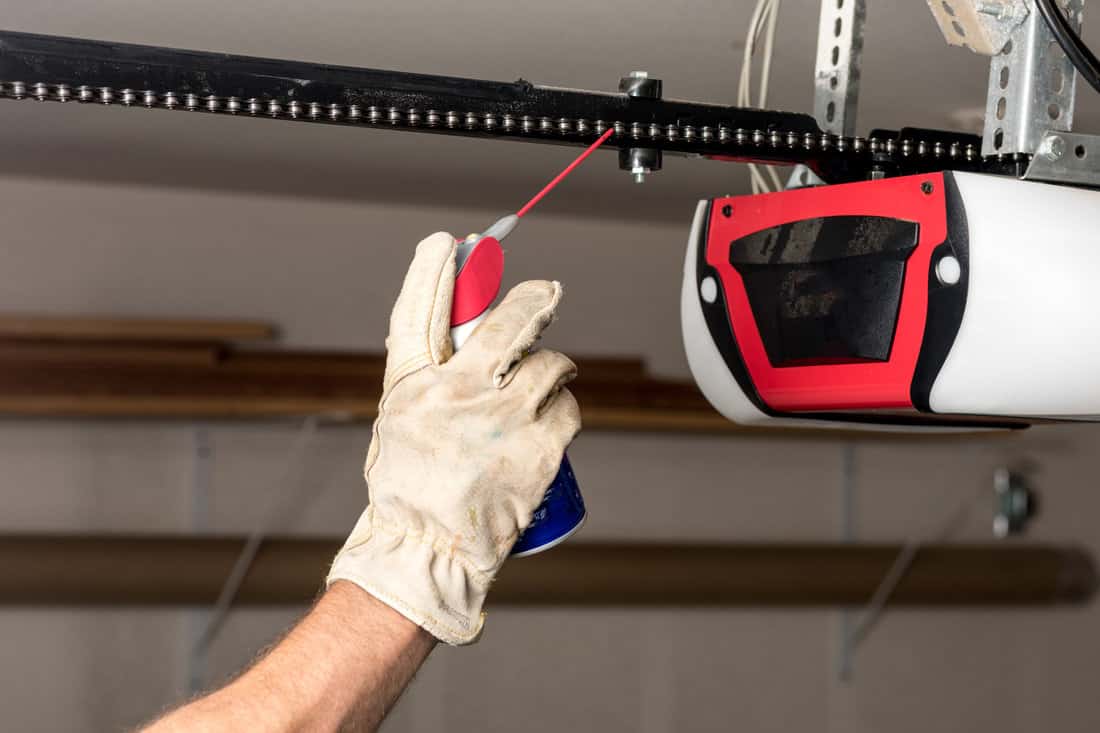
There are a few other crucial maintenance chores to finish before thinking about how to lubricate a garage door.
These include checking the door's rollers and hinges, tightening the chain, and ensuring that all nuts and bolts are securely fastened.
You might find other problems that need to be fixed due to the excess noise your garage door creates while you carry out these maintenance procedures.
Close the garage door and turn off the power supply after completing these maintenance duties before continuing with the steps below.
1. Clean Garage Door Tracks With A Vacuum And Cloth
Cleaning the garage door tracks is the first step in lubricating garage doors. Clean the tracks so the rollers may glide easily along them when they open and close the door, but do not lubricate them.
Vacuum any dust or substantial material off the tracks to start. After that, remove any remaining dirt or dust with a moist rag.
If necessary, you can try using an automotive brake cleaner to help loosen and clear away tough messes that have been trapped.
2. Lubricate Door Rollers And Hinges
It's time to lubricate various components after cleaning the tracks. Remember that silicone or lithium-based grease is recommended when lubricating garage door rollers and hinges.
Lift the door slowly to lubricate the hinges. Spray or wipe the grease onto the hinges as the door bends along the track.
Lubricate the rollers, which are attached along the door's track close to the hinges. Using the thinner straw attachment, you can lubricate the tiny ball bearings found inside these rollers.
3. Lubricate The Springs And Bearing Plates
For the following stage, you will require a step ladder. The top of most garage doors has springs.
The round bearing plates are positioned on either side of the springs. Lubricate both bearing plates and springs to guarantee optimal operation.
Spray or thoroughly wipe down these components with the grease to lubricate them. You should oil the garage door and then open it. This motion will help to distribute the grease evenly.
You will need to replace the door's springs if you see that they are bent or otherwise damaged.
Hiring a professional to replace garage door springs is preferable because it is difficult and can result in catastrophic injury.
4. Lubricate The Arm And Top Rail Bar
Spraying grease on the top rail and arm bar is the next step in lubricating a garage door. The top rail, for those of you who don't know, is the portion of the door that hangs parallel to the garage ceiling.
You can also spot the top rail bar by checking for the area of the door where the chain runs. The part that needs lubrication is where the chain travels along the top of this rail.
The arm bar joins the top rail to the garage door. Spray grease on this component also to ensure smooth operation.
5. Lubricate The Lock, Then Check Everything
Lastly, lubricate the garage door lock. By doing this, you can lock and unlock the door more efficiently, and the lock won't rust. Reconnect the power to the door and try it out.
Listen carefully and pay close attention when it opens and closes to determine whether the door is moving and sounding better than before.
It may be necessary to make an appointment with a garage door specialist to evaluate the problems if lubricating the door doesn't seem to have solved it.
To Finish It All Up
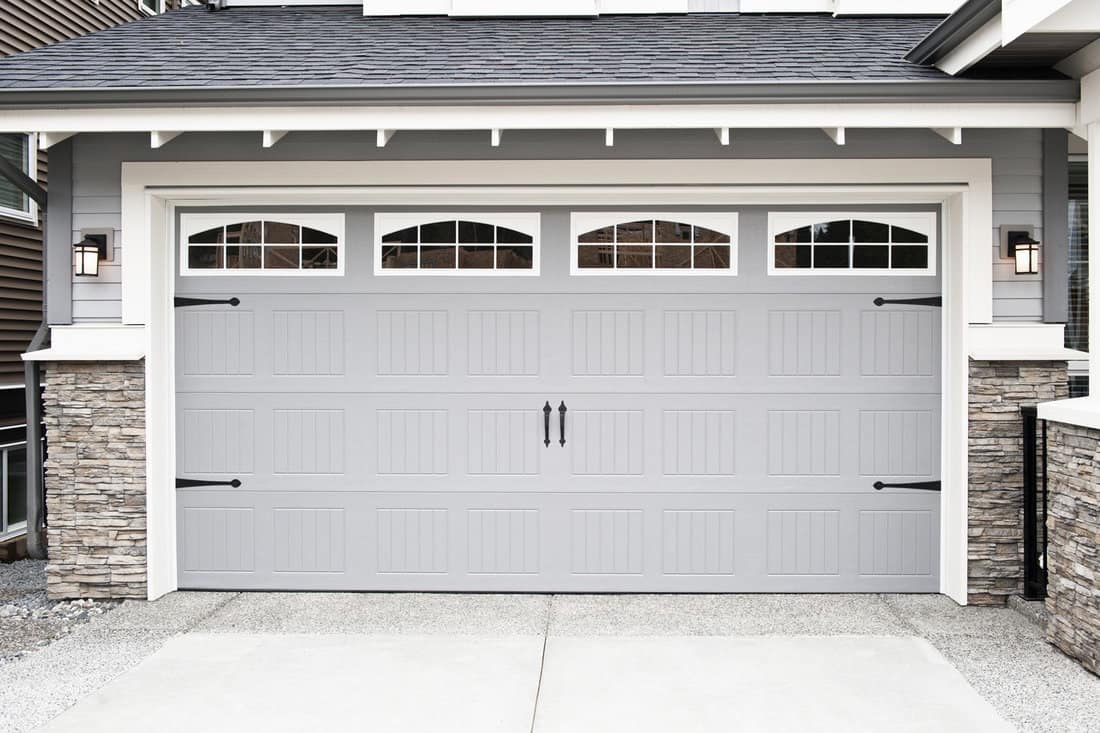
It's crucial to learn how to lubricate a garage door as part of house maintenance. Your garage door will last longer if you maintain all of its working parts lubricated regularly, and it will run more smoothly and silently too.
It's fortunately not too tricky to lubricate a garage door. You can finish this task on your own by using the above-listed methods.
However, it might be necessary to get in touch with an expert if you see any parts of your door that appear to need repairs.
Made it to the end? Check out these helpful related posts!






![Epoxyshield vs. Rocksolid: Which is Better? [Pros, Cons & Differences Explained]](https://homedecorbliss.com/wp-content/uploads/2023/08/shutterstock_1764682379-600x400.jpg)
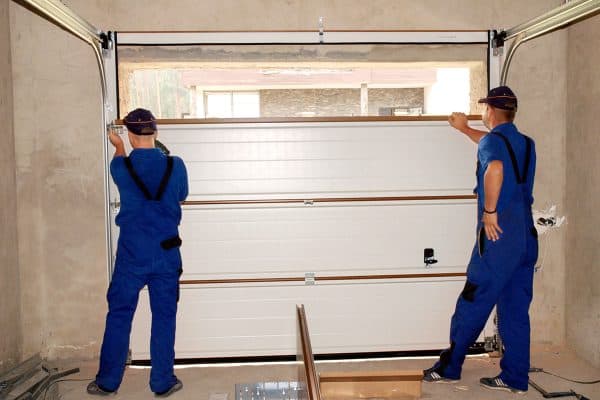
![Springs tensioning the garage door mechanism,garage door mechanism with roller and cable and spring, How To Adjust A Garage Door Spring & Cables [Step By Step Guide]](https://homedecorbliss.com/wp-content/uploads/2022/10/Springs-tensioning-the-garage-door-mechanismgarage-door-mechanism-with-roller-and-cable-and-spring-600x400.jpg)